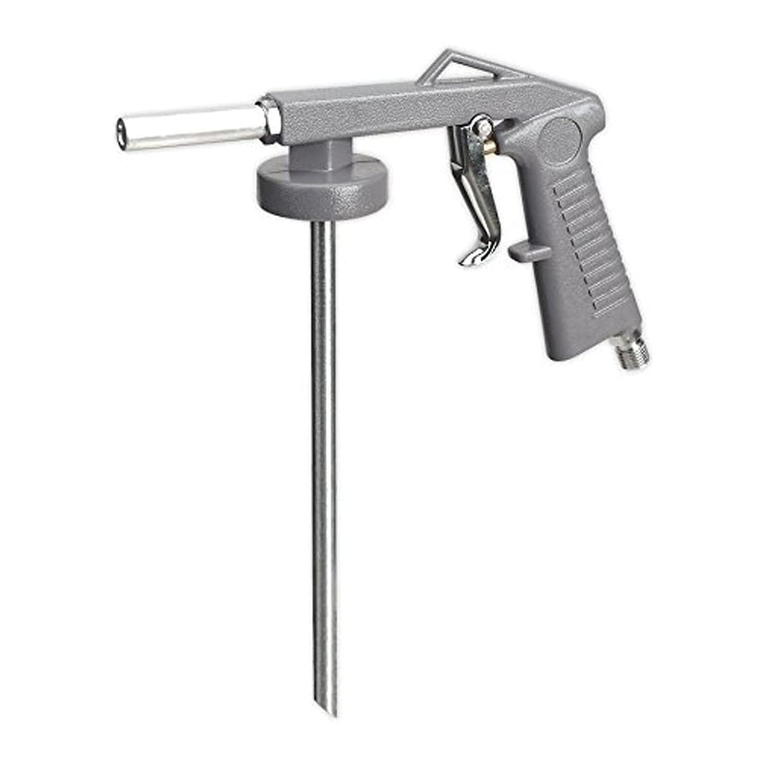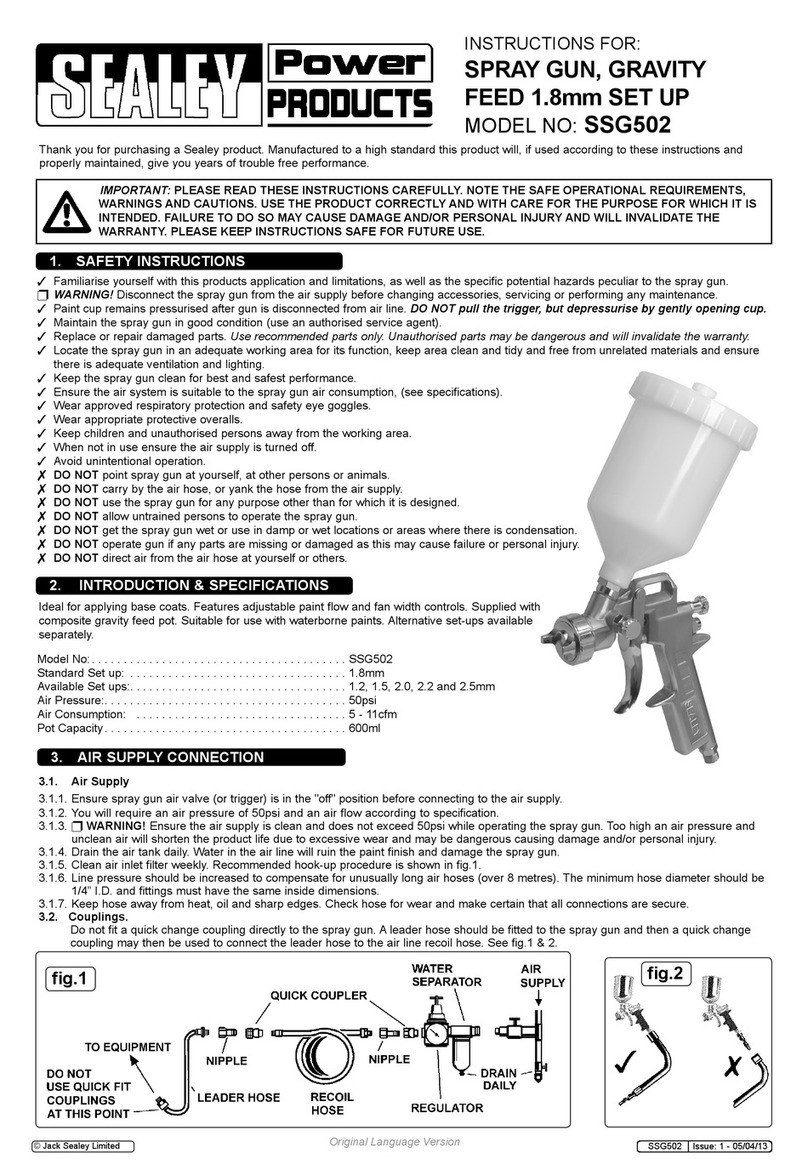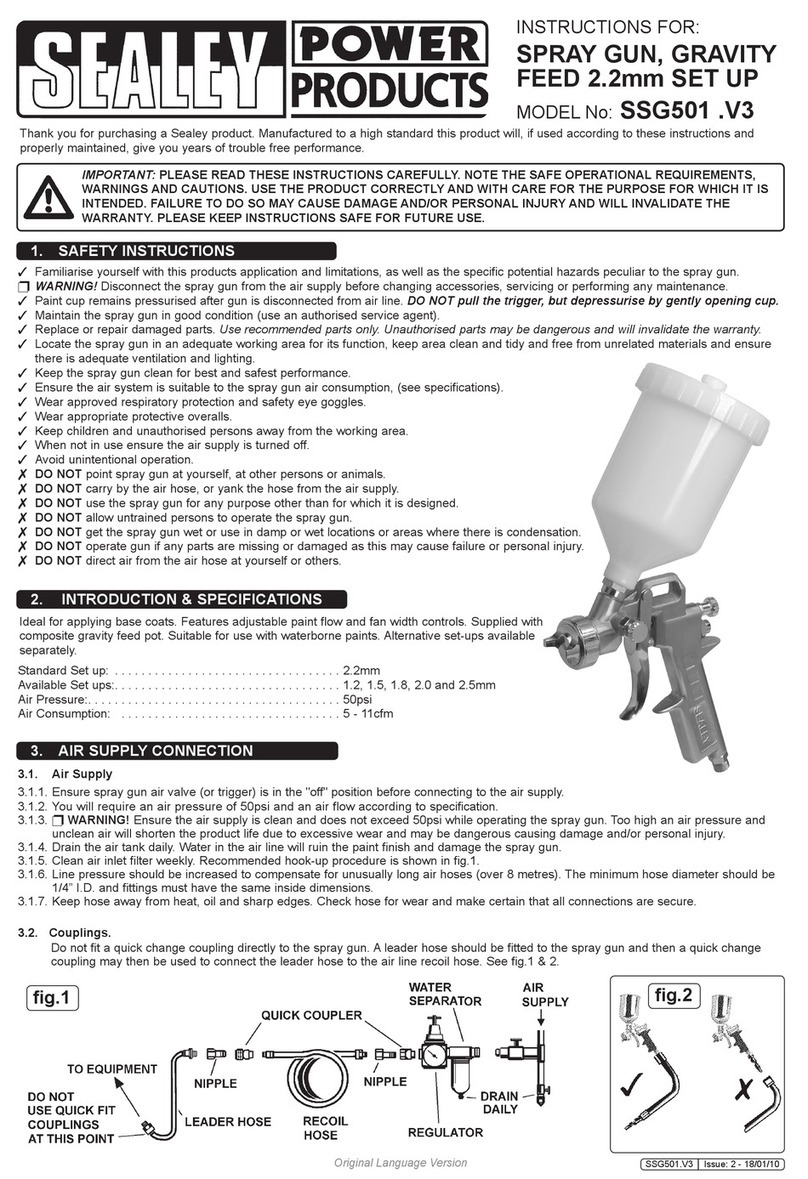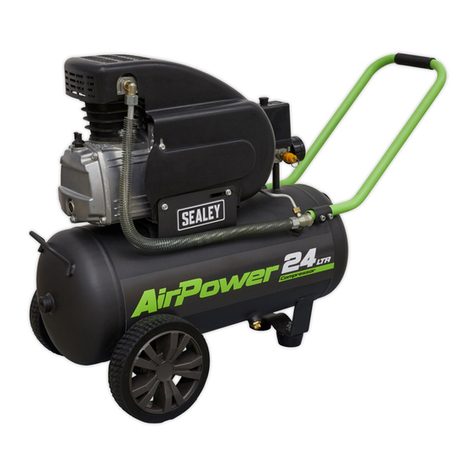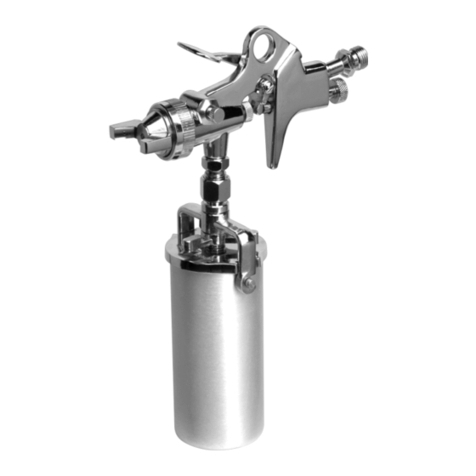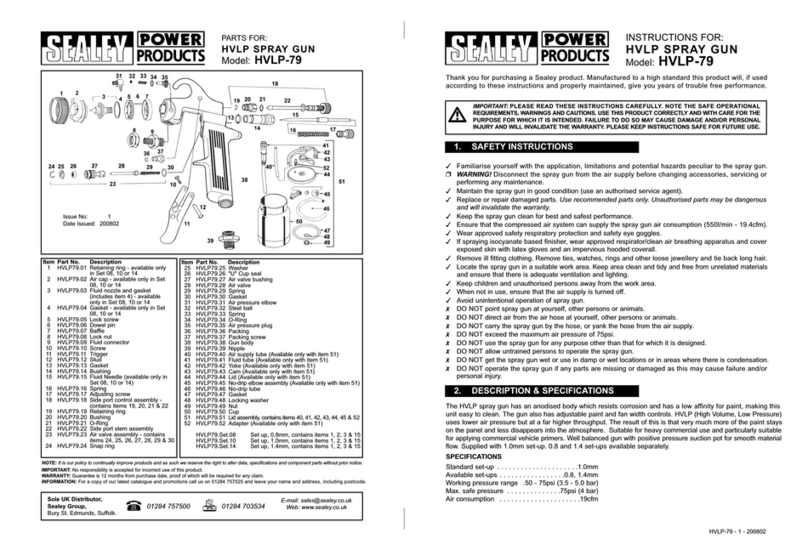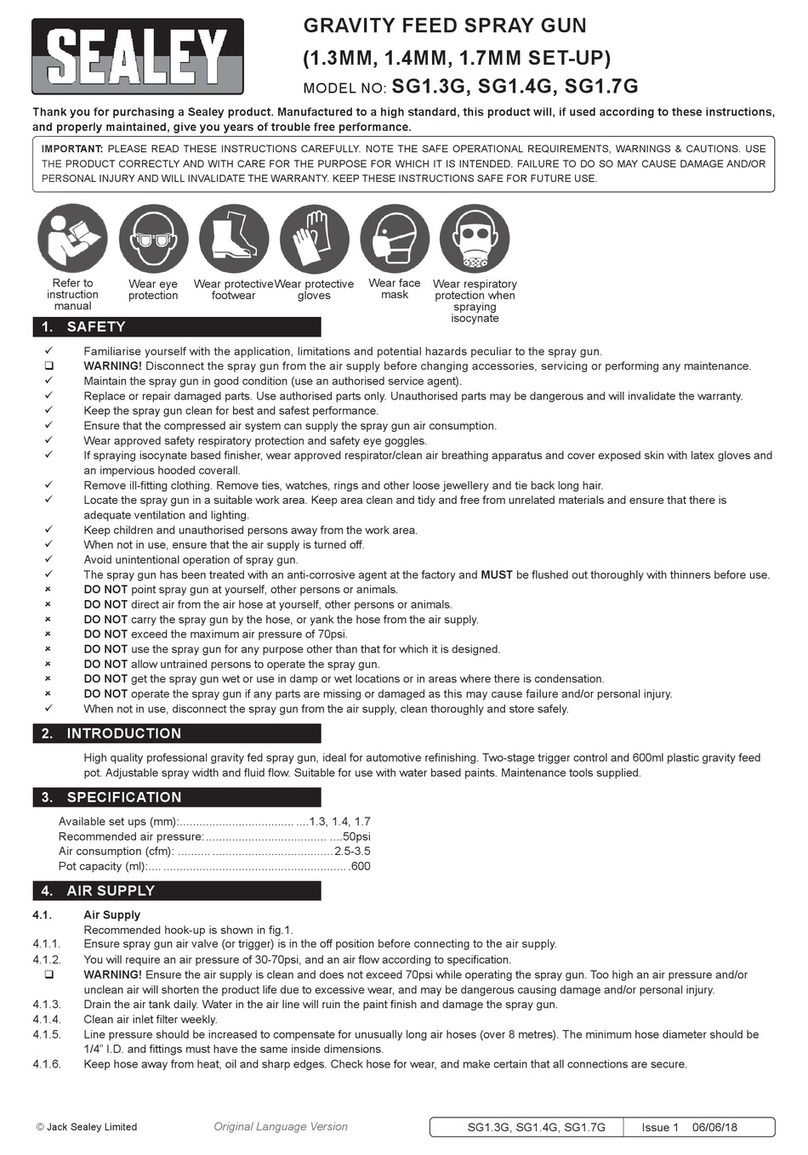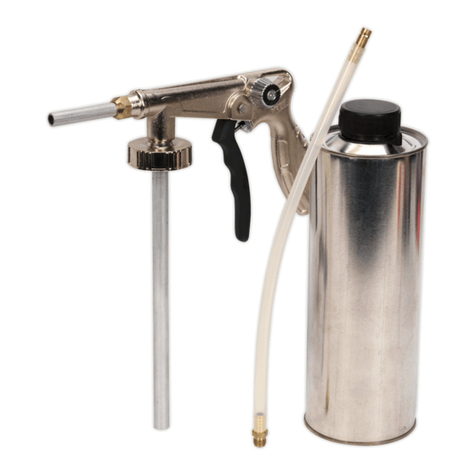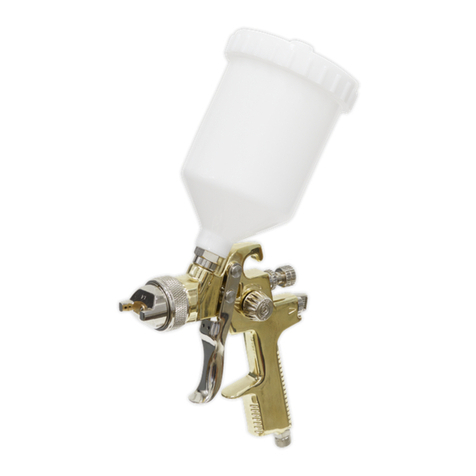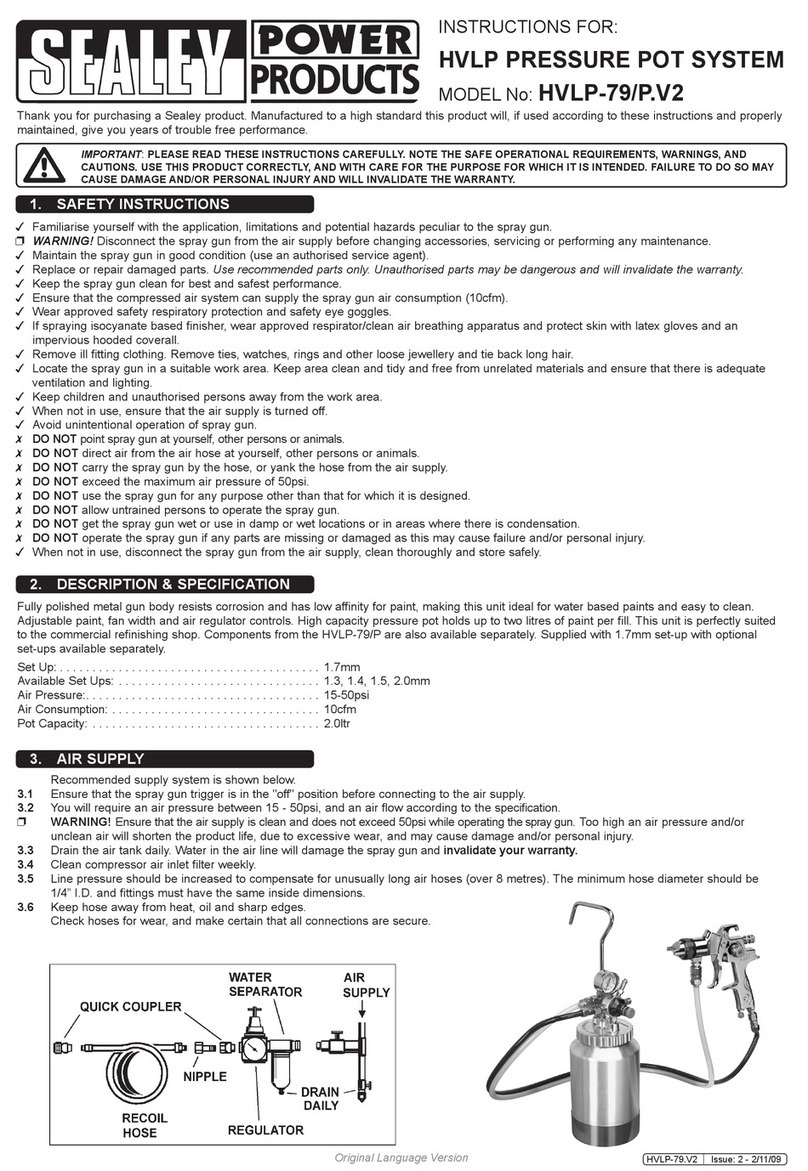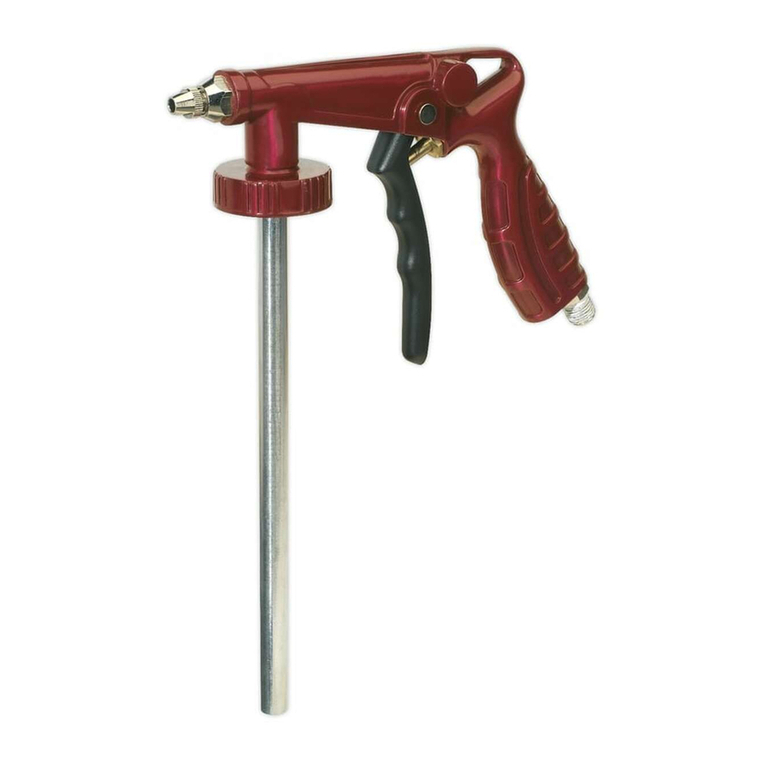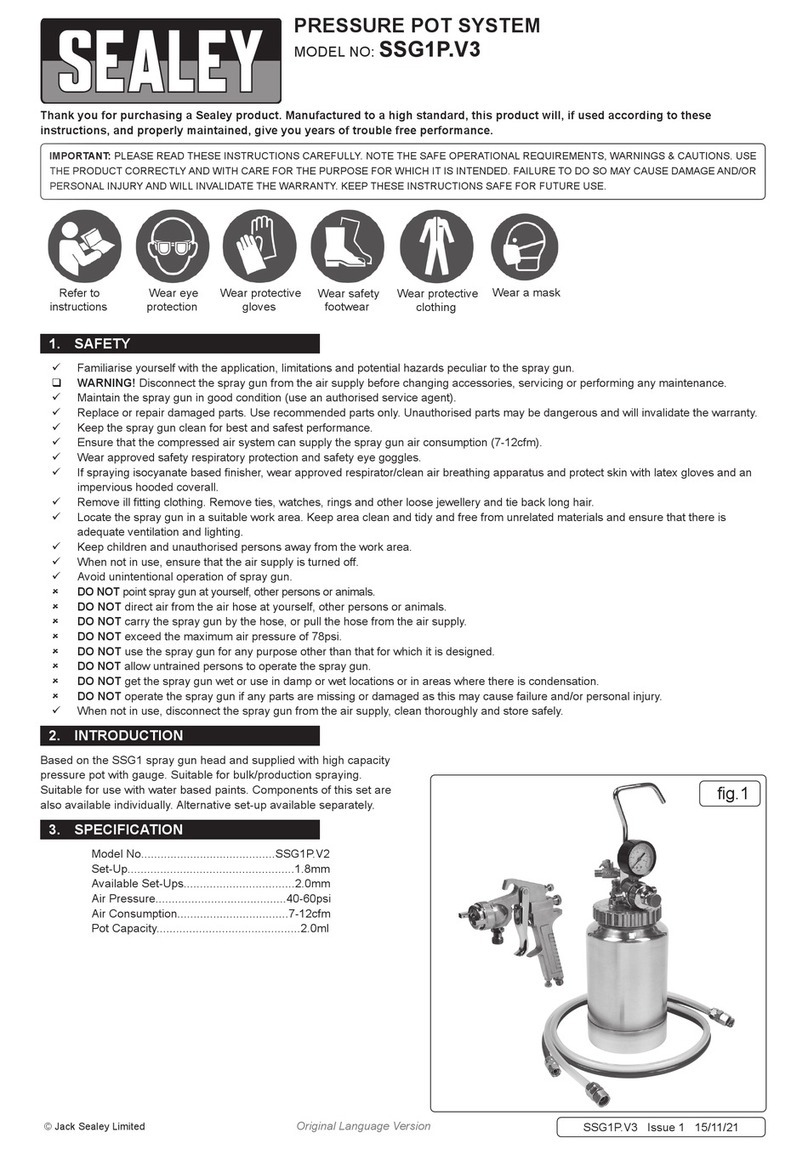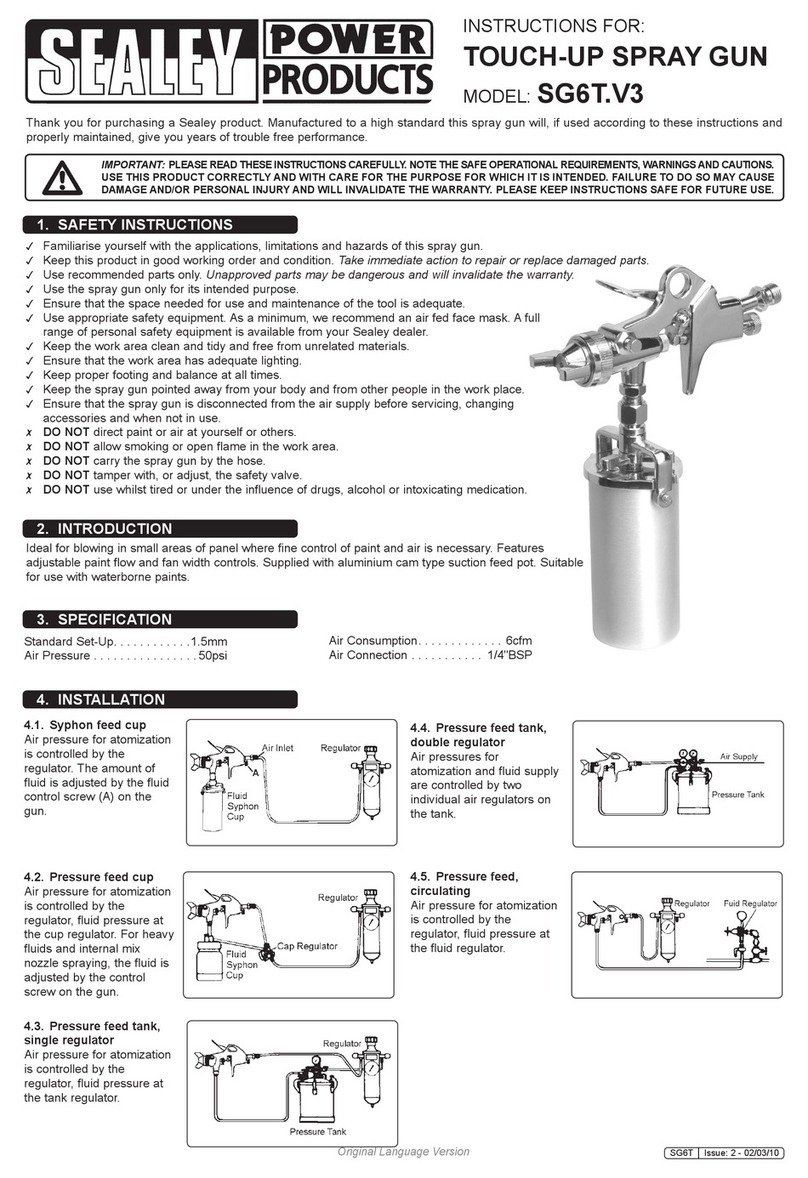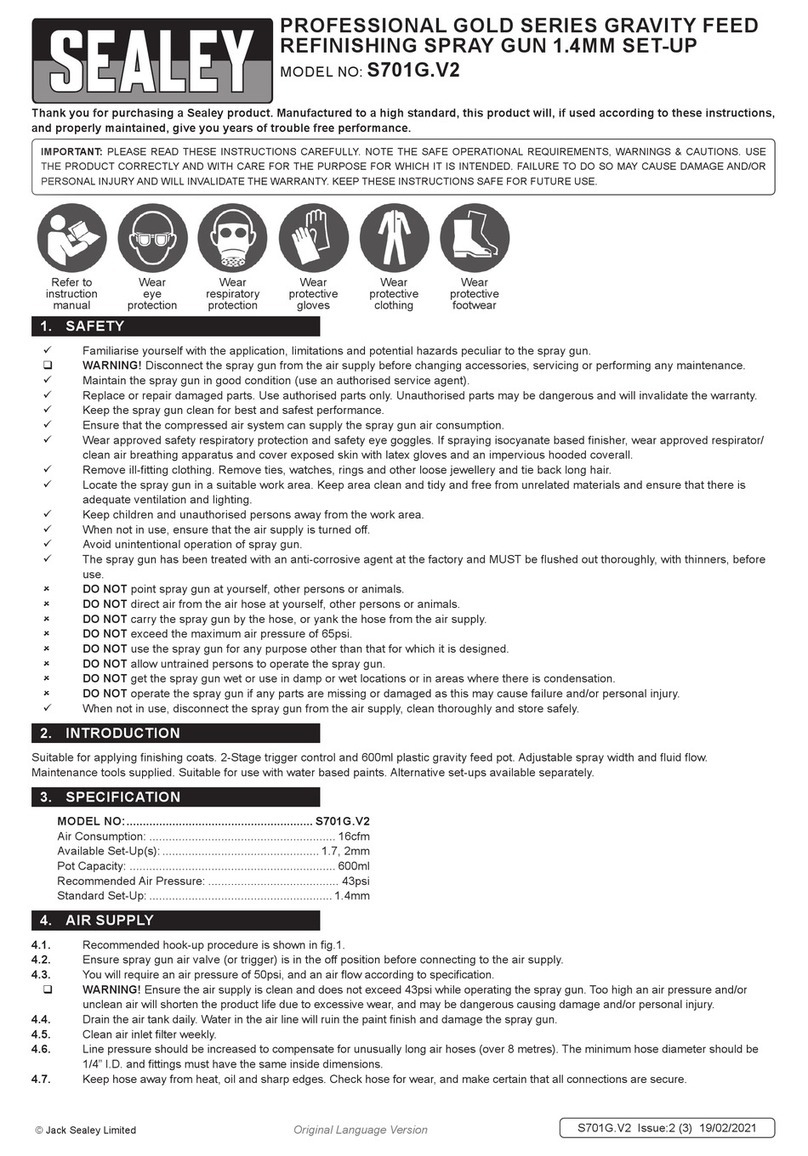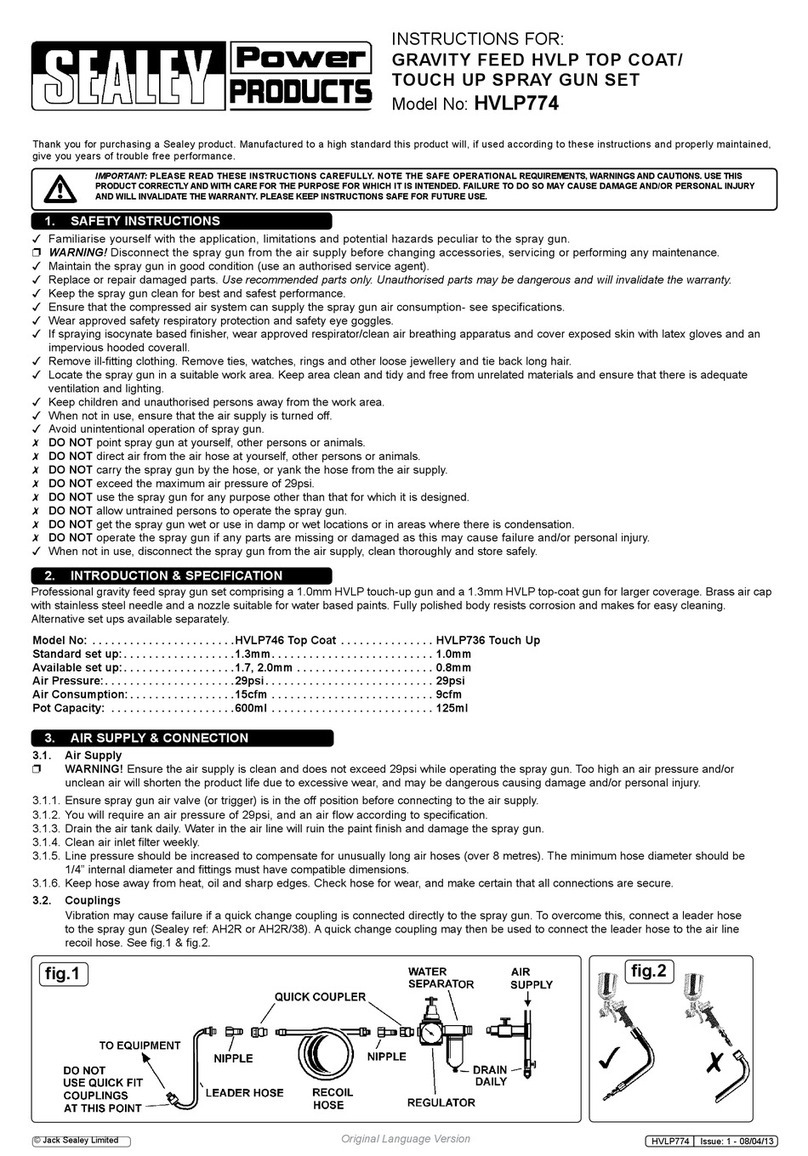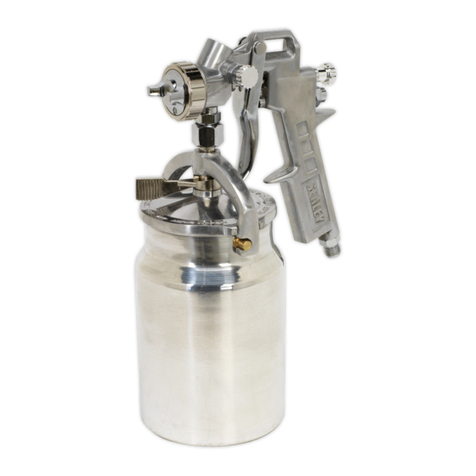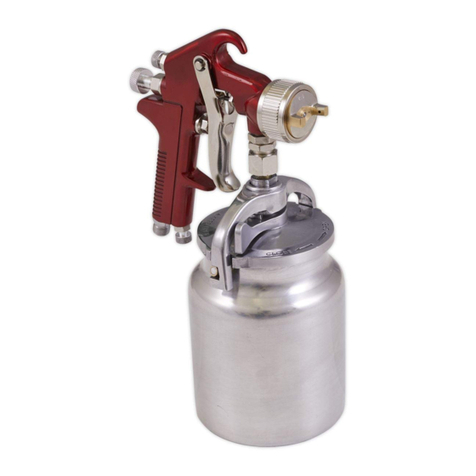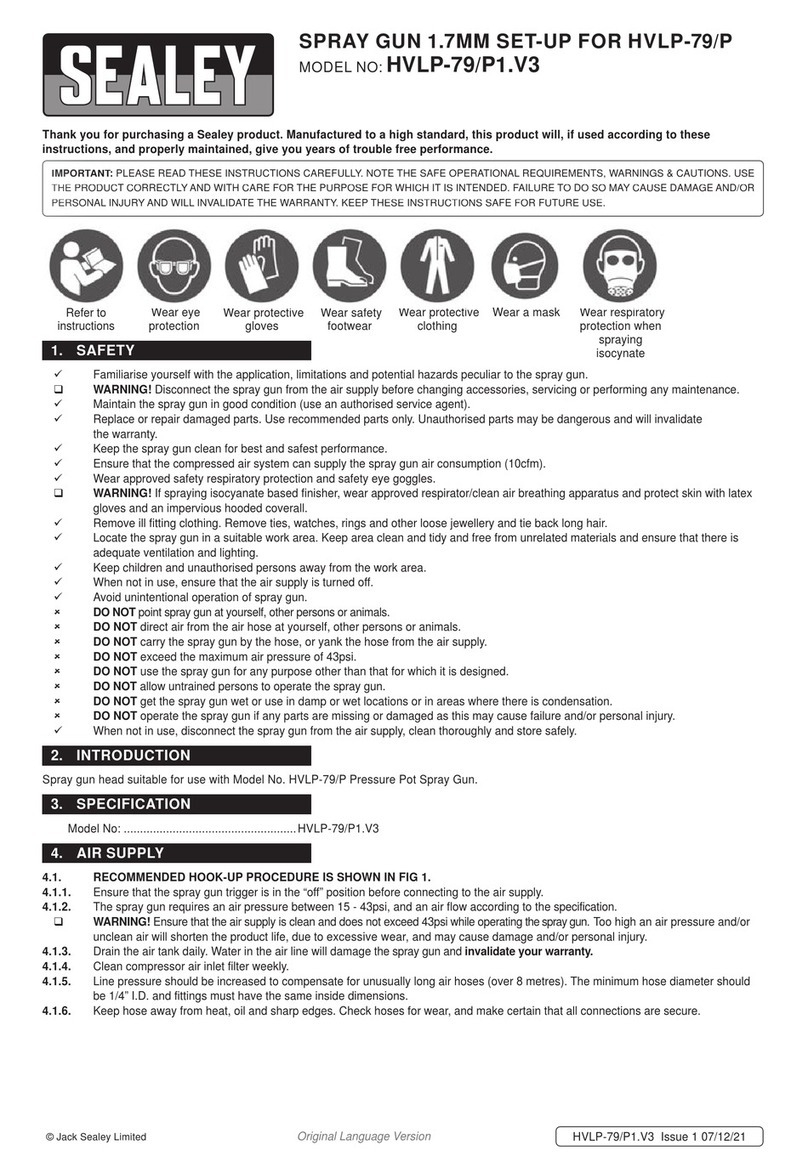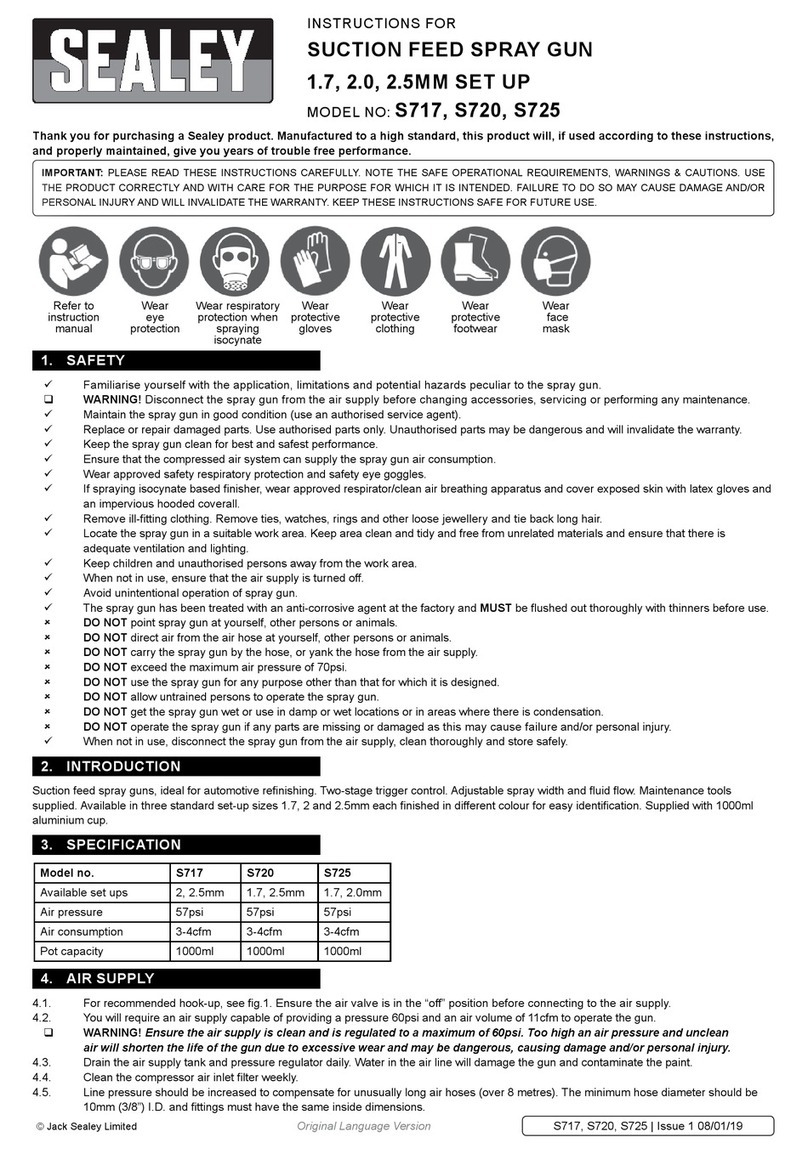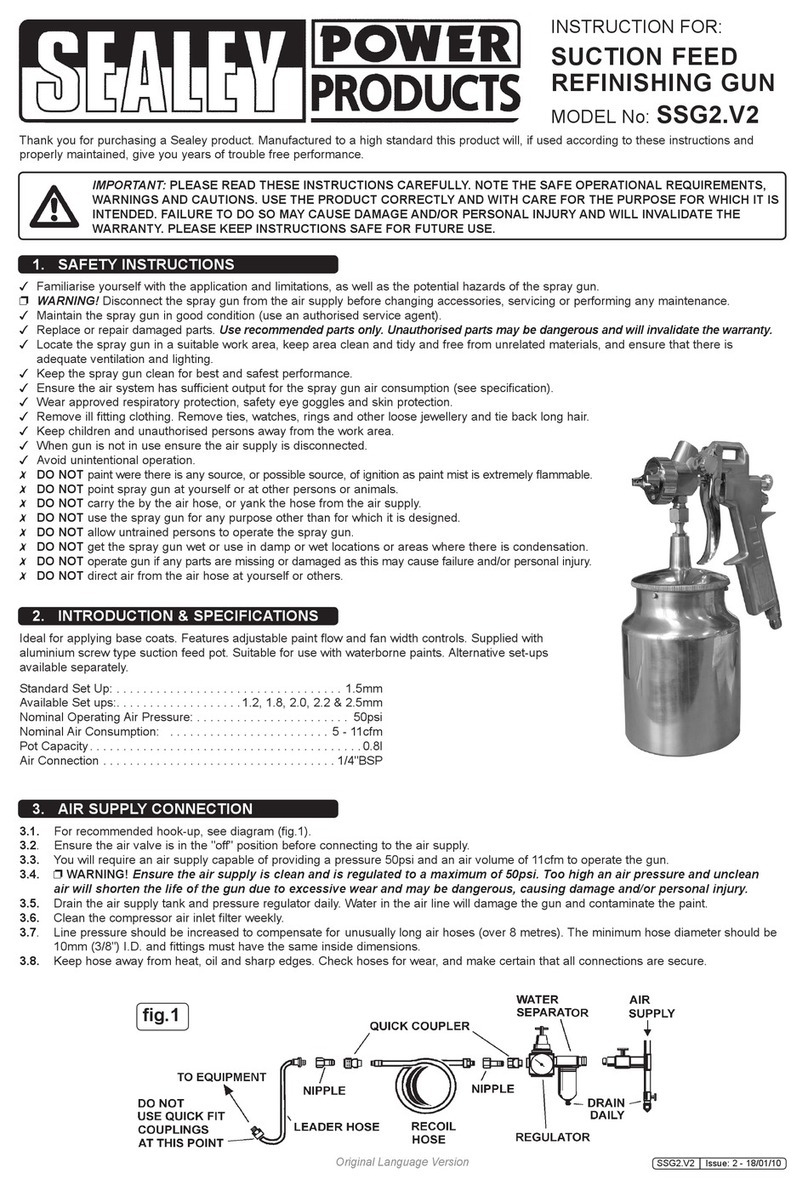INSTRUCTIONS FOR:
HVLP GRAVITY FEED
SPRAY GUNS
Thank you for purchasing a Sealey product. Manufactured to a high standard this product will, if used according to these instructions and
properly maintained, give you years of trouble free performance.
IMPORTANT: PLEASE READ THESE INSTRUCTIONS CAREFULLY. NOTE THE SAFE OPERATIONAL REQUIREMENTS, WARNINGS AND CAUTIONS. USE THIS
PRODUCT CORRECTLY AND WITH CARE FOR THE PURPOSE FOR WHICH IT IS INTENDED. FAILURE TO DO SO MAY CAUSE DAMAGE AND/OR PERSONAL INJURY
AND WILL INVALIDATE THE WARRANTY. PLEASE KEEP INSTRUCTIONS SAFE FOR FUTURE USE.
MODEL No's: HVLP731, HVLP741.V2, HVLP742
1. SAFETY INSTRUCTIONS
Familiarise yourself with the application, limitations and potential hazards peculiar to the spray gun.
WARNING!Disconnect the spray gun from the air supply before changing accessories, servicing or performing any maintenance.
Maintain the spray gun in good condition (use an authorised service agent).
Replace or repair damaged parts. Use authorised parts only. Unauthorised parts may be dangerous and will invalidate the warranty.
Keep the spray gun clean for best and safest performance.
Ensure that the compressed air system can supply the spray gun air consumption for the model to be used.
Wear approved safety respiratory protection and safety eye goggles.
If spraying isocynate based finisher, wear approved respirator/clean air breathing apparatus and cover exposed skin with latex gloves and an
impervious hooded coverall.
Remove ill-fitting clothing. Remove ties, watches, rings and other loose jewellery and tie back long hair.
Locate the spray gun in a suitable work area. Keep area clean and tidy and free from unrelated materials and ensure that there is adequate
ventilation and lighting.
Keep children and unauthorised persons away from the work area.
When not in use, ensure that the air supply is turned off.
Avoid unintentional operation of spray gun.
The spray gun has been treated with an anticorrosive agent at the factory and MUST be flushed out thoroughly with thinner before use.
DO NOT point spray gun at yourself, other persons or animals.
DO NOT direct air from the air hose at yourself, other persons or animals.
DO NOT carry the spray gun by the hose, or yank the hose from the air supply.
DO NOT exceed the working pressure of 43psi (3bar).
DO NOT use the spray gun for any purpose other than that for which it is designed.
DO NOT allow untrained persons to operate the spray gun.
DO NOT get the spray gun wet or use in damp or wet locations or in areas where there is condensation.
DO NOT operate the spray gun if any parts are missing or damaged as this may cause failure and/or personal injury.
When not in use, disconnect the spray gun from the air supply, clean thoroughly and store safely.
2. INTRODUCTION AND SPECIFICATIONS
HVLP731 Gravity Feed
Touch Up Spray Gun
Ideal for blowing-in small
areas of panel where fine con-
trol of paint and air is necessary.
Anodized spray gun body
resists corrosion and makes
for easier cleaning. Brass air
cap with stainless steel needle
and nozzle make it suitable for
waterborne paint. Supplied
with 0.8mm set-up, 1.0mm
set-up is available separately.
Model No: .............................................................HVLP731
Supplied standard set-up: ......................................................0.8mm
Available set-ups: ................................................................... 1.0mm
Working pressure: ..........................................................43psi (3bar)
Air consumption:................................................... 9.0cfm (255 l/min)
Pot capacity............................................................................. 100ml
HVLP741.V2 / HVLP742
Gravity Feed Spray Guns
Round/flat fan control allows
the spray pattern to be adjusted
for any job. Anodized spray
gun body resists corrosion and
makes for easier cleaning.
The HVLP741.V2 Gravity Feed
Spray Gun has a brass air cap
with stainless steel needle and
nozzle make it suitable for
waterborne paint. Supplied
with a 1.3 set-up suitable for
topcoats. Other set-ups are
available separately as shown
below.
The HVLP742 Gravity Feed
Spray Gun has an aluminium
air cap with stainless steel
needle and nozzle make it
suitable for waterborne paint.
Supplied with 2.0mm set-up
suitable for primer. Other set-ups
are available separately as
shown below.
Model No: ......................... HVLP741.V2............... HVLP742
Supplied standard set-up:. .................. 1.3mm........................2.0mm
Available set-ups: ........... 1.2, 1.4, 1.7, 2.0mm................ 1.4, 1.7mm
Working pressure: ....................... 43psi (3bar)............... 43psi (3bar)
Air consumption:.............. 15.0cfm (425 l/min)....15.0cfm (425 l/min)
Pot capacity...........................................600ml.........................600ml
Original Language Version HVLP731, HVLP741.V2, HVLP742 Issue: 2 - 12/10/09
